 DVRs may well be the hot product in the home entertainment industry, but dusty old video cassettes still rule the roost in the US.
DVRs may well be the hot product in the home entertainment industry, but dusty old video cassettes still rule the roost in the US.
A survey from iSuppli Corporation reports that DVRs are still a long way from challenging VCRs as the dominant method for recording TV in US households, but strong growth is predicted through to 2009
Only 3.8 million units were sold in 2003, but sales almost tripled in 2004 to 11.0 million units.
iSuppli estimates that sales will continue to grow, rising to 16.3 million by the end of this year and 45.5 million by 2009.
CENTRIS research also found a large increase in the DVR market last year, with the number of DVR units owned by US households rising 119% to 3.5 million from 2003 to 2004.
The company noted that the increases in DVR were mainly due to consumers taking advantage of units offered with digital broadcast satellite (DBS) and cable subscription services.
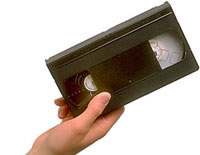 However, take up is still very low compared to many other consumer electronics products: just 6% of all US households have a DVR, compared to the 87% with a VCR, 60% with a DVD console and 12% with Video on Demand (VOD).
However, take up is still very low compared to many other consumer electronics products: just 6% of all US households have a DVR, compared to the 87% with a VCR, 60% with a DVD console and 12% with Video on Demand (VOD).
The squeeze is going to be on for PC-based DVR makers and standalone players like TiVo.
Despite extremely loyal user bases and a market share currently at about 40% (TiVo dominates this with a market share between 20% and 30%), JupiterResearch is predicting that this market share will decline to 20% by 2009, with cable and DBS DVRs accounting for the remaining 80%.
These companies can offer their products very cheaply (charging only a fee for renting the machine with no extra subscription cost) and introduce consumers to an affordable DVR experience.
In an effort to maintain their market share, TiVo is planning to branch out its services early next year by allowing subscribers to download movies from the Internet to their machines, along with a partnership with DVD rental company NetFlix.
DVR Dilemma (emarketer.com)
iSuppli
Jupiter Research
Centris
 Unconfirmed reports are suggesting that Virgin Electronics, the consumer electronics division of Virgin, have become an early digital music casualty with the division discontinuing its product line.
Unconfirmed reports are suggesting that Virgin Electronics, the consumer electronics division of Virgin, have become an early digital music casualty with the division discontinuing its product line.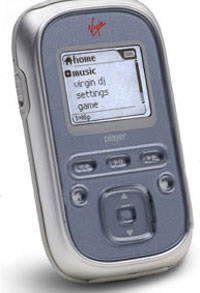 The company had pinned their hopes on the well-reviewed “Virgin player 5GB”, which had the audacity to try and take the iPod mini head-on.
The company had pinned their hopes on the well-reviewed “Virgin player 5GB”, which had the audacity to try and take the iPod mini head-on.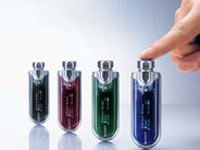 Apple Computer shares dropped Tuesday as Sony relaunched its famous Walkman line amongst concerns that increased competition from Napster might impact its dominance of online music and portable players.
Apple Computer shares dropped Tuesday as Sony relaunched its famous Walkman line amongst concerns that increased competition from Napster might impact its dominance of online music and portable players. Over the last twelve months, Apple’s share price has gone from US$23 (€17/£12) to an all-time high of US$81.99 (€61/£42) just before the split was announced.
Over the last twelve months, Apple’s share price has gone from US$23 (€17/£12) to an all-time high of US$81.99 (€61/£42) just before the split was announced. (CeBIT, Hannover) Wandering around the Sony products at the pre-CeBIT press conference, I came across the DSC-T7, the smallest, sexiest model whos roots lay with the DSC-T1.
(CeBIT, Hannover) Wandering around the Sony products at the pre-CeBIT press conference, I came across the DSC-T7, the smallest, sexiest model whos roots lay with the DSC-T1.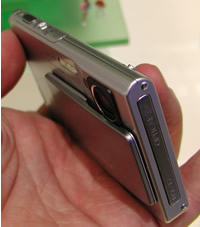 a sliding cover that both covers and protects the lens and switches the camera on. Measuring only 14.8 mm / 0.6 in at the lens cover, and 9.8 mm / 0.4in for the main body, it packs 5.1m pixel. The back is taken up with a 2.5″ TFT Hybrid LCD, displaying 230,000 pixels.
a sliding cover that both covers and protects the lens and switches the camera on. Measuring only 14.8 mm / 0.6 in at the lens cover, and 9.8 mm / 0.4in for the main body, it packs 5.1m pixel. The back is taken up with a 2.5″ TFT Hybrid LCD, displaying 230,000 pixels.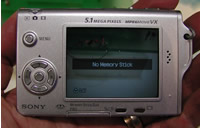
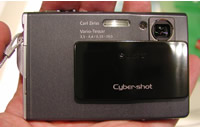 Nothing definite on release dates or price but the talk in the corridors is it should be around in May for around 375Euro, $500, 260 UKP.
Nothing definite on release dates or price but the talk in the corridors is it should be around in May for around 375Euro, $500, 260 UKP. Symbian OS anti-virus specialist SimWorks, has announced that it has identified the first virus targeting the platform, that is capable of spreading itself via MMS messages.
Symbian OS anti-virus specialist SimWorks, has announced that it has identified the first virus targeting the platform, that is capable of spreading itself via MMS messages. To add insult to injury, users will be punished financially by the virus, with MMS messages typically costing between $0.25 and $1.00 a pop.
To add insult to injury, users will be punished financially by the virus, with MMS messages typically costing between $0.25 and $1.00 a pop.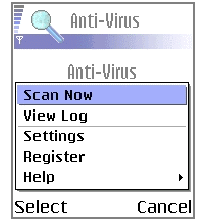 The good news is that like previous Symbian OS-targeted viruses, users are still required to accept the installation of the virus whether receiving it via Bluetooth or MMS.
The good news is that like previous Symbian OS-targeted viruses, users are still required to accept the installation of the virus whether receiving it via Bluetooth or MMS. The world’s leading technology tradeshow, CeBIT, starts this Thursday in Hannover, north Germany with pundits expecting the show to reflect the recent stellar growth in the $2 trillion technology industry.
The world’s leading technology tradeshow, CeBIT, starts this Thursday in Hannover, north Germany with pundits expecting the show to reflect the recent stellar growth in the $2 trillion technology industry. As VoIP (Voice over Internet Protocol) continues to gain in popularity, there’ll be dozens of companies showcasing devices to make free calls as well as displays of corded and cordless Skype phones by Siemens, Motorola, Good Way Technologies and Greatwall Infotech.
As VoIP (Voice over Internet Protocol) continues to gain in popularity, there’ll be dozens of companies showcasing devices to make free calls as well as displays of corded and cordless Skype phones by Siemens, Motorola, Good Way Technologies and Greatwall Infotech.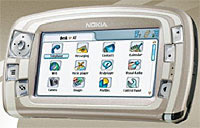 Finnish telecommunications equipment giant Nokia has announced a mobile television pilot, bringing live television broadcasts to mobile devices, starting in Finland today.
Finnish telecommunications equipment giant Nokia has announced a mobile television pilot, bringing live television broadcasts to mobile devices, starting in Finland today.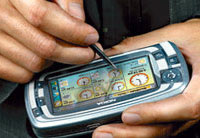 The mobile TV test uses IP Datacasting (IPDC), which conforms with the DVB-H standard.
The mobile TV test uses IP Datacasting (IPDC), which conforms with the DVB-H standard. An episode of the new series of the sci-fi drama Doctor Who has been leaked onto the Internet, three weeks before the series is expected to begin on BBC One.
An episode of the new series of the sci-fi drama Doctor Who has been leaked onto the Internet, three weeks before the series is expected to begin on BBC One. The eagerly awaited new series, filmed in Wales, features the well respected actor Christopher Eccleston as Dr Who, with former teen pop singer Billie Piper as his assistant.
The eagerly awaited new series, filmed in Wales, features the well respected actor Christopher Eccleston as Dr Who, with former teen pop singer Billie Piper as his assistant.